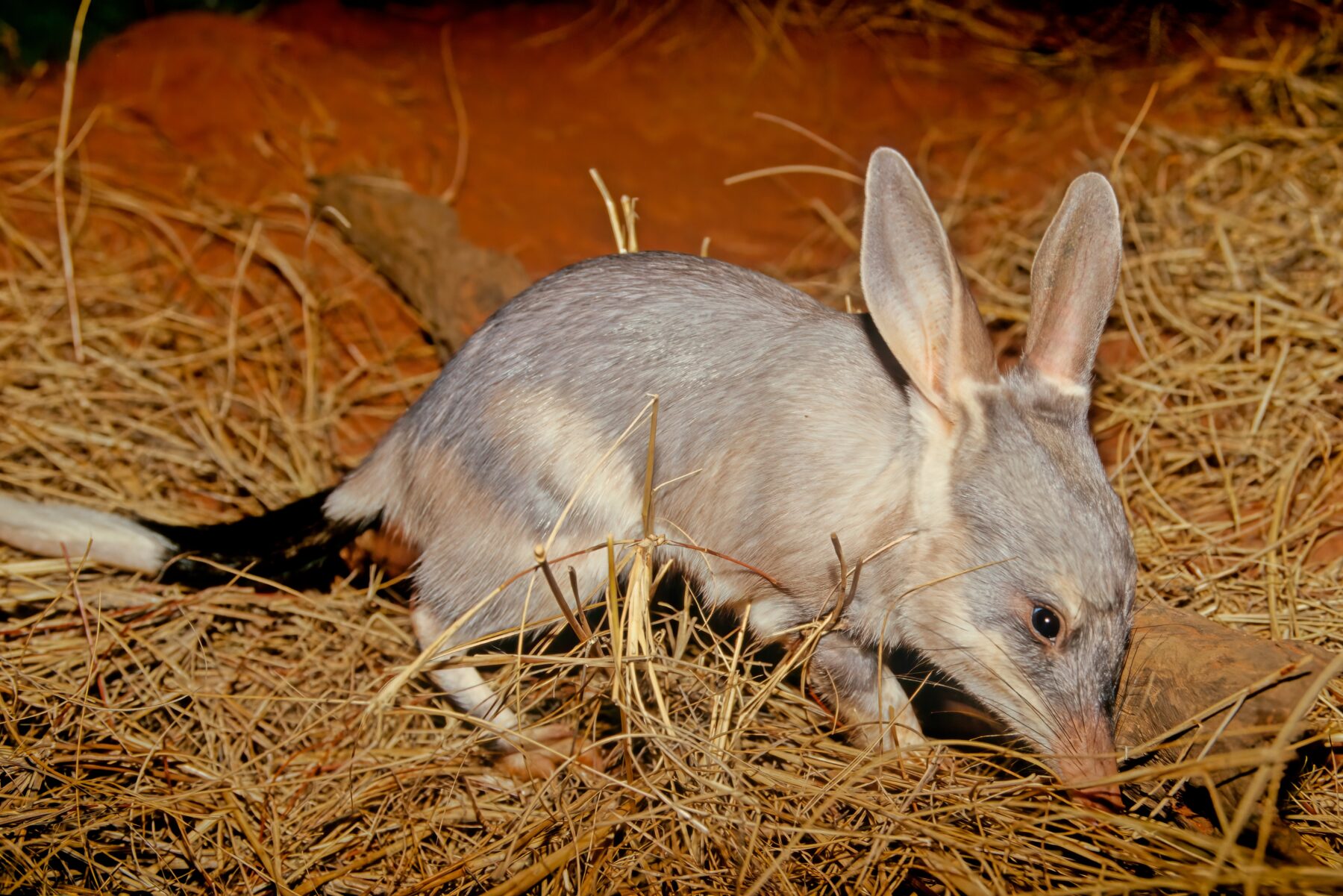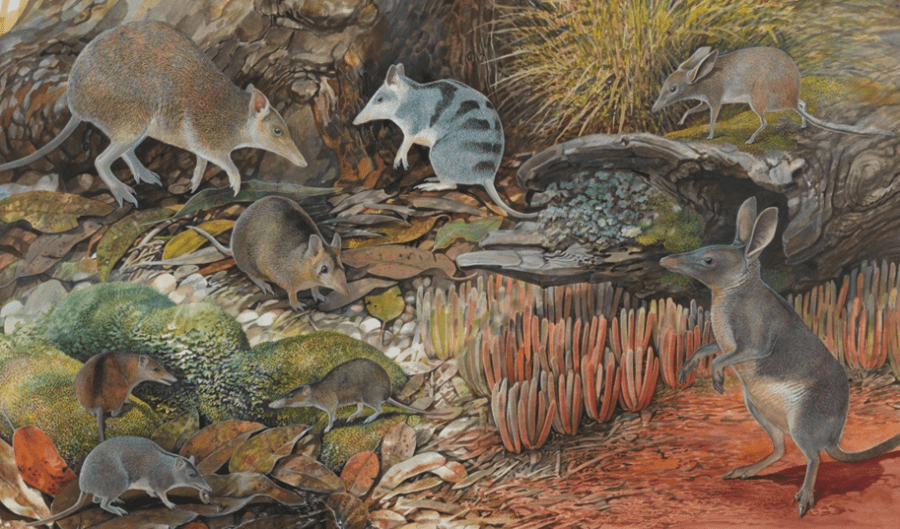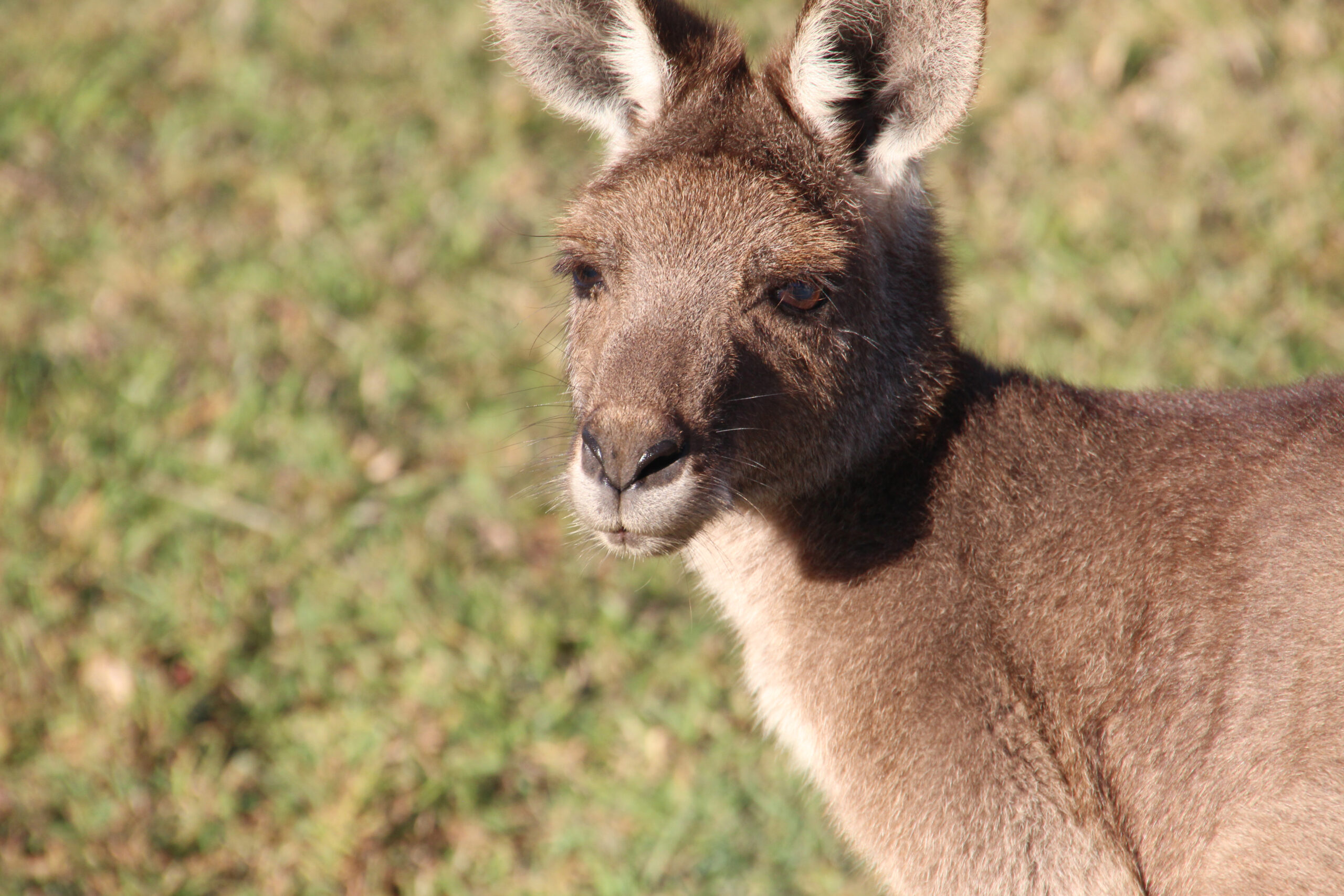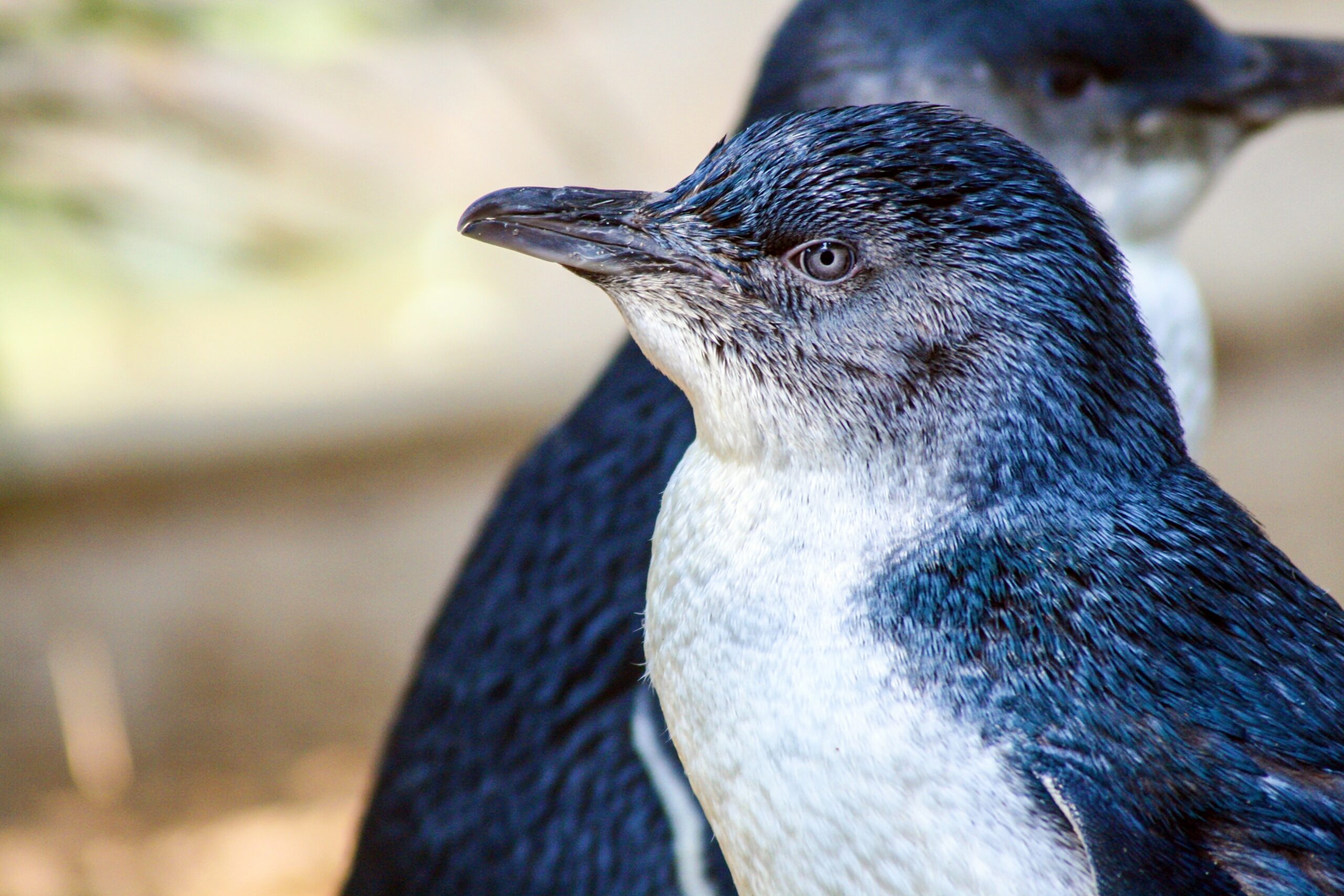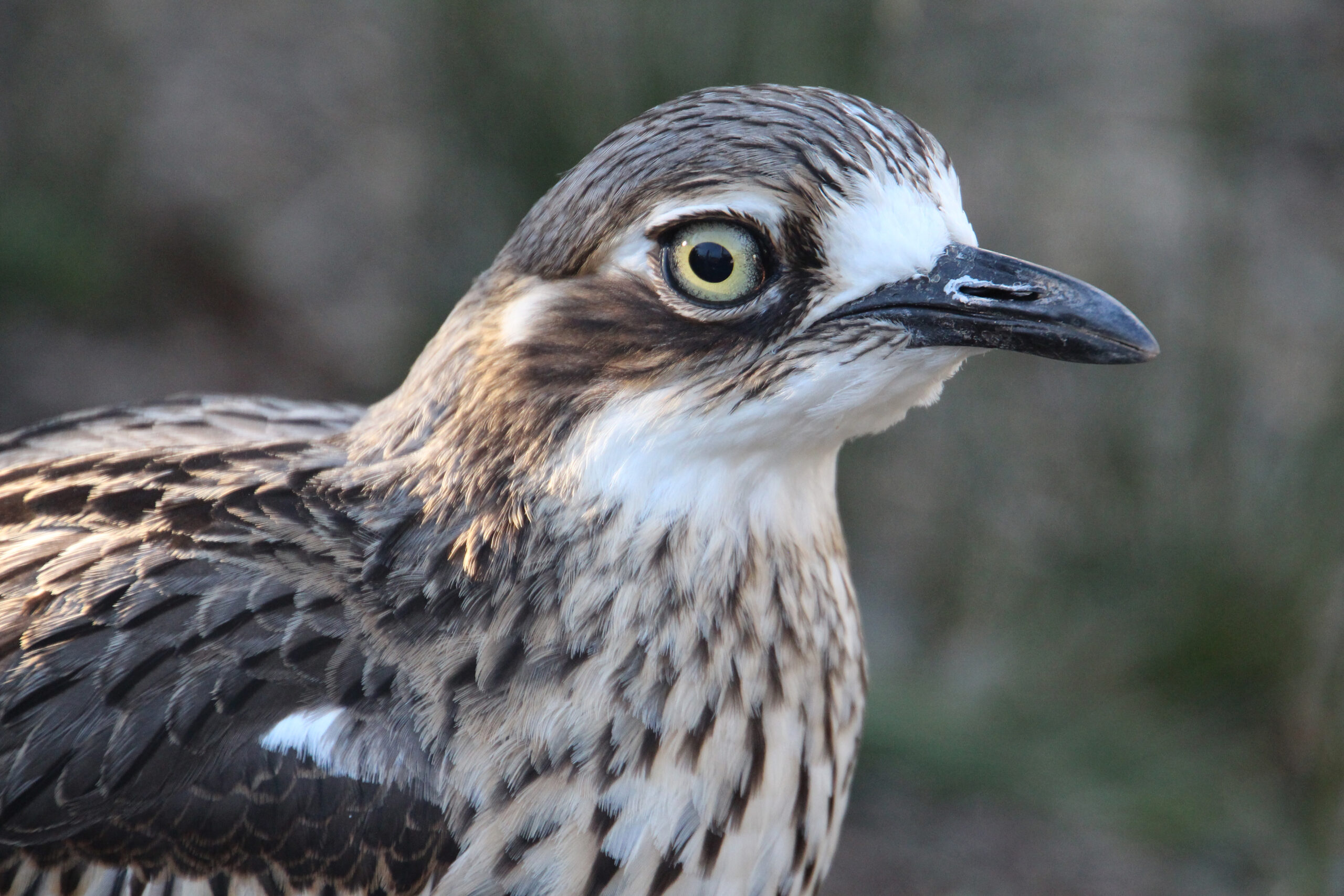| Common name | Greater bilby |
| Scientific name | Macrotis lagotis |
| Type | Marsupial |
| Diet | Omnivorous, eating insects, fruit, bulbs, and larvae |
| Average lifespan | Around 7 years |
| Size | Females between 29 and 55cm long in body, tail length between 20 –29cm long. |
Australia’s answer to the Easter Bunny, the greater bilby (Macrotis lagotis) may have long ears and whiskers, but unlike the introduced rabbit which has infiltrated Australia’s natural environment, this ground dwelling marsupial is under threat of extinction.
A medium sized burrowing marsupial, the greater bilby is about the size of a rabbit and has a long, pointed nose, silky pale, blue-grey fur with a creamy-tan underbelly and a black and white tail that can measure up to 29cm long. The greater bilby’s large, pinkish ears have become somewhat of a trademark, with the animal sometimes referred to as the rabbit-eared bandicoot. Far more than superficial, these large easter bunny-like ears are responsible for regulating body temperature as well as providing the greater bilby with exceptionally sharp hearing, which makes up for the fact that the greater bilby can’t see very well.
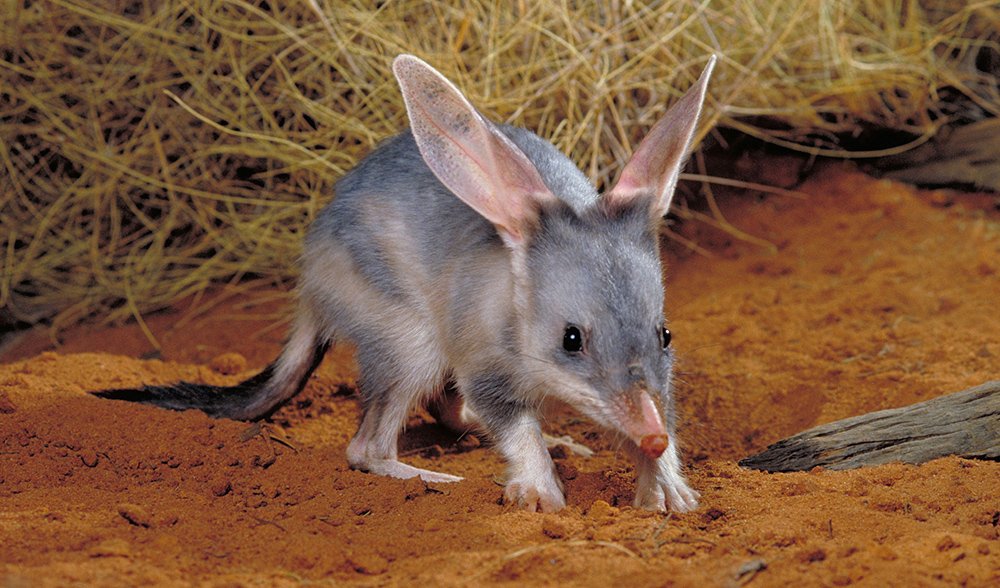
Initially there were two species of bilby, the greater bilby and the lesser bilby (Macrotis leucura) but the lesser bilby is understood to have become extinct in the 1950s. Once inhabiting up to 70% of the Australian landscape, the arrival of introduced predators including foxes and domestic cats, along with food competition from domestic rabbits, mean the greater bilby is under threat and can now only be found within specific, disjunct locations of the country – the Tanami Desert within the Northern Territory, the stony soils of the Mitchell grasslands of southwest Queensland and sites within Western Australia, including the Great Sandy and Gibson Deserts, parts of the Pilbara and the Kimberly.
The greater bilby thrives in a range of different dry, hot habitats across Australia from the arid and rocky soils found within the desert with little ground cover, to semi-arid shrublands and woodlands, hummock and tussock grasslands, Acicia shrublands and sandstone ridges. Greater bilbies are known as fossorial which means they can be found within rocky and clayey soils.
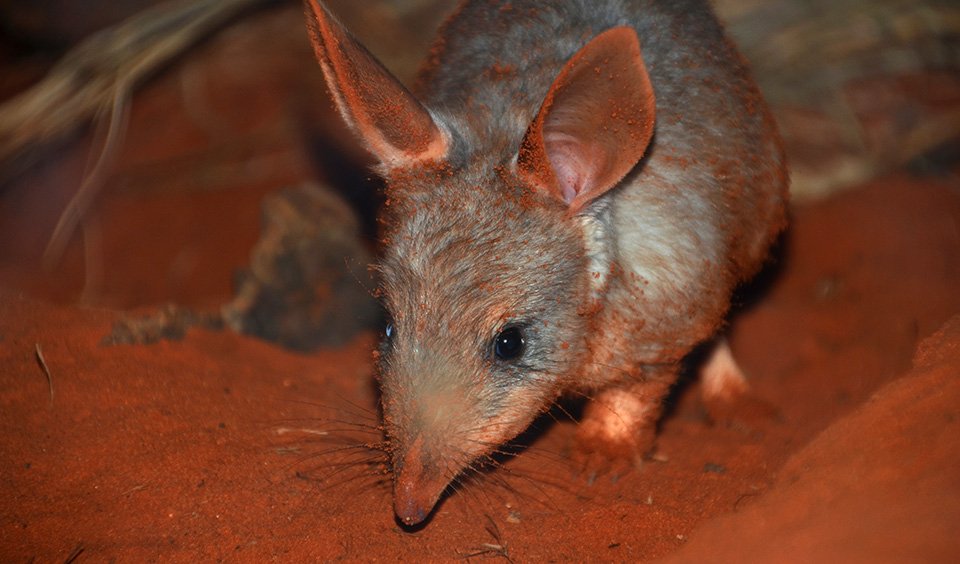
Able to survive without drinking water, the greater bilby gets all the hydration it needs through its food. An opportunistic feeder, these marsupials eat whatever they can find, including the seeds of Dactyloctenium radulans and Yakirra australiense grasses, fruit, bulbs, small insects such as ants, spiders, termites plus lizards, fungai and sometimes small mammals, snails, and eggs. With their enormous ear against the ground, the greater bilby can hear burrowing insects below the ground, and then use their claws to dig a series of holes between 10 and 25cm deep, in search of food.
Nocturnal, the greater bilby shelters within its long and intricate burrow system during the day to avoid the heat and any would-be predators. Burrows are shared by other local native animals, with the bilby digging a new burrow every few weeks, some as long as three metres and as deep as two metres.
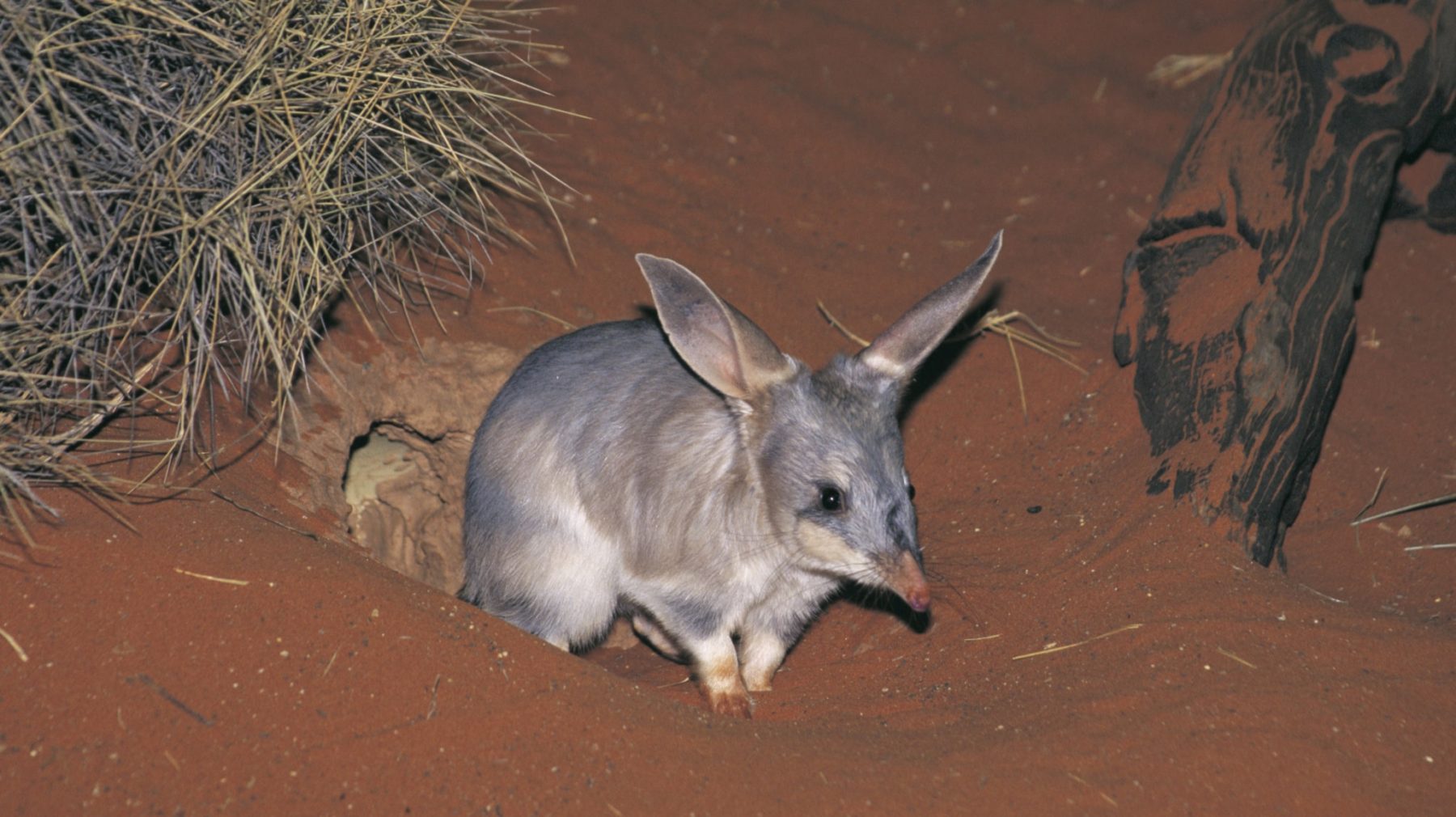
The greater bilby tends to live a solitary life but can breed throughout the year depending on environmental conditions. The female bilby has a backwards facing pouch, like the koala and the wombat, to stop dirt from entering during digging. With a short gestation period of 14 days, female bilbies can give birth up to four times a year, usually with one or two newborns per litter.
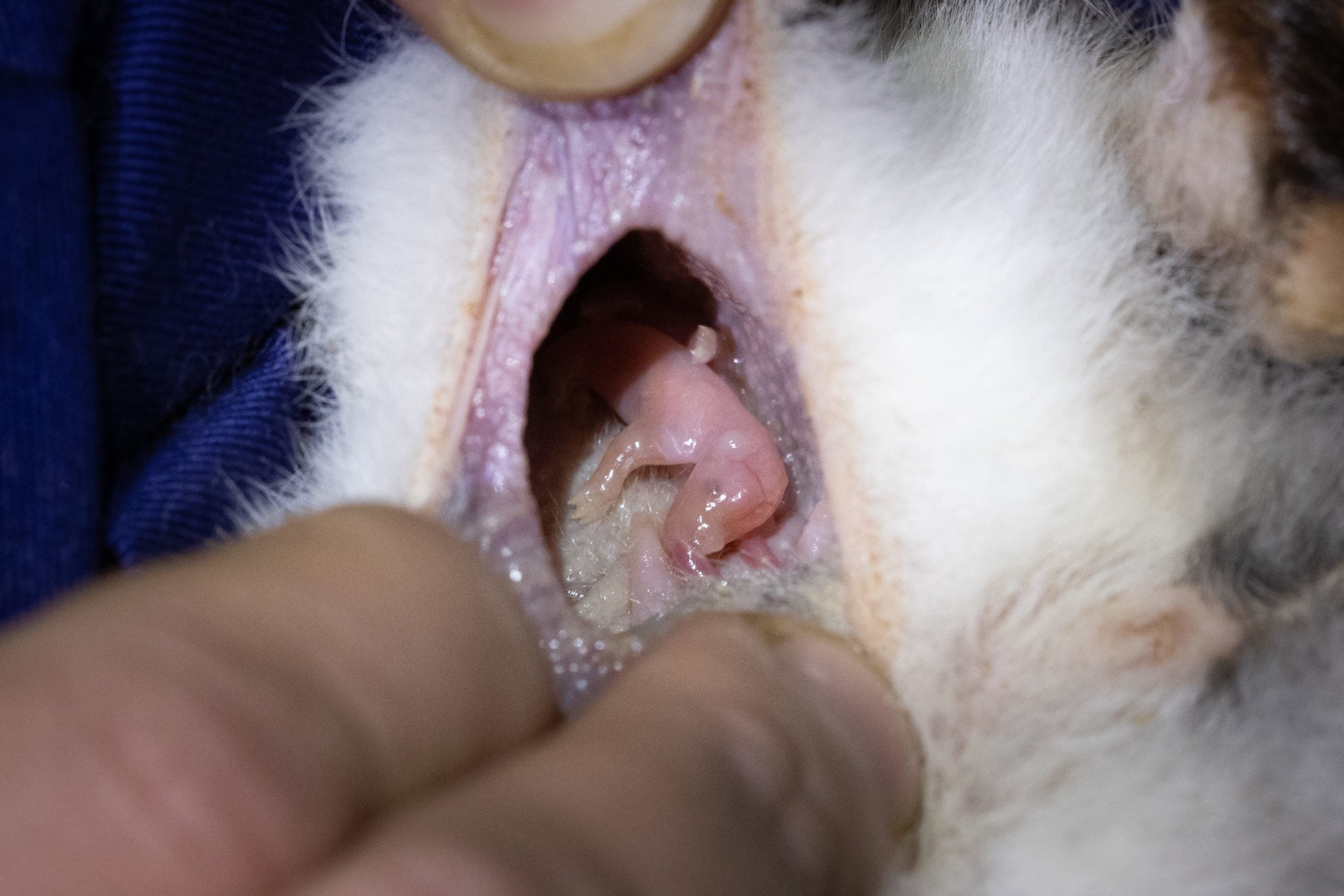
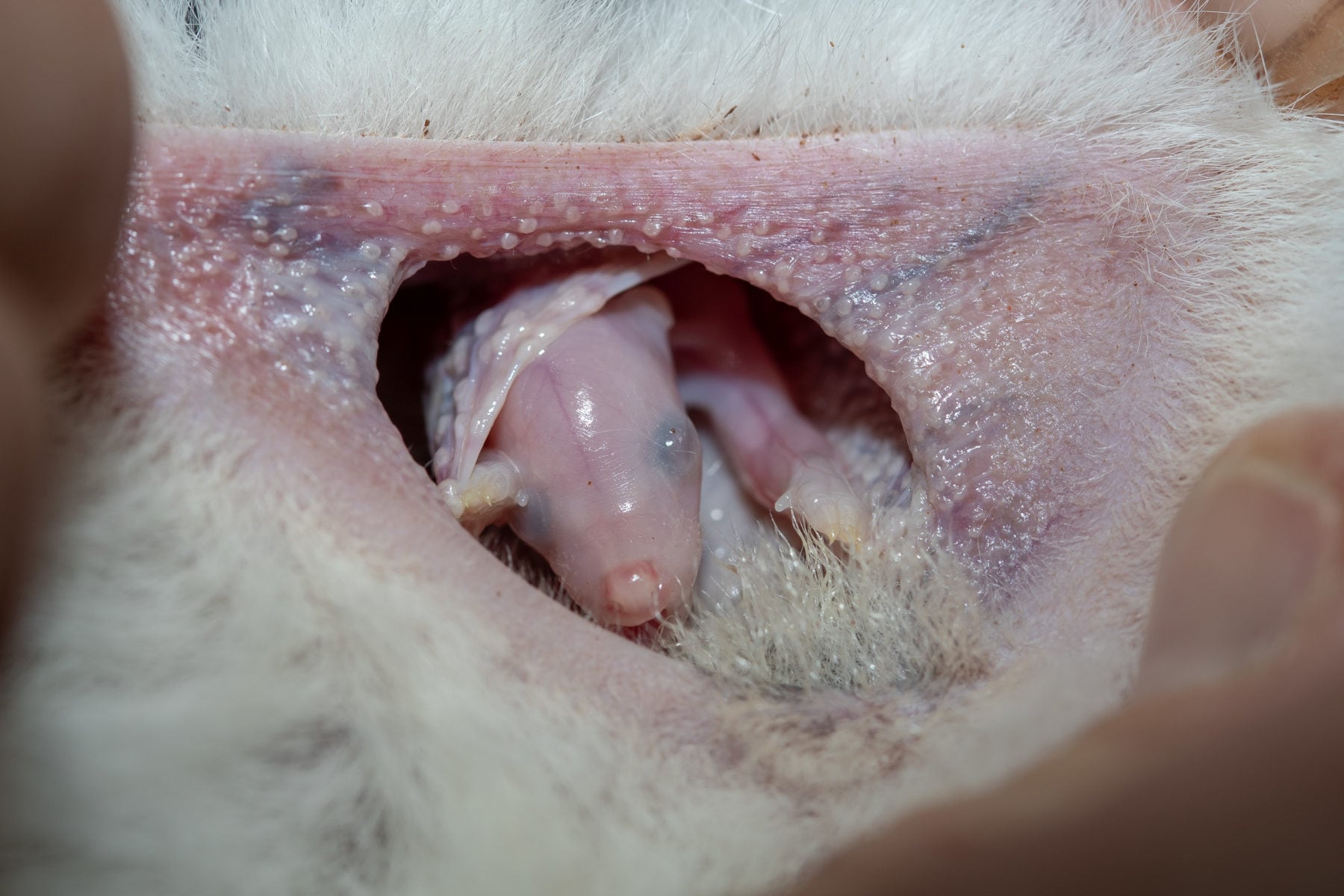
The juvenile bilbies attach to a teat in the mother’s pouch and become fully weaned at around 13 to 15 weeks. The young will then live in the burrow with the mother for a few more weeks, sharing food from her hunting trips. Female bilbies become sexually mature at five months of age, sparking the start of the breeding cycle all over again.
